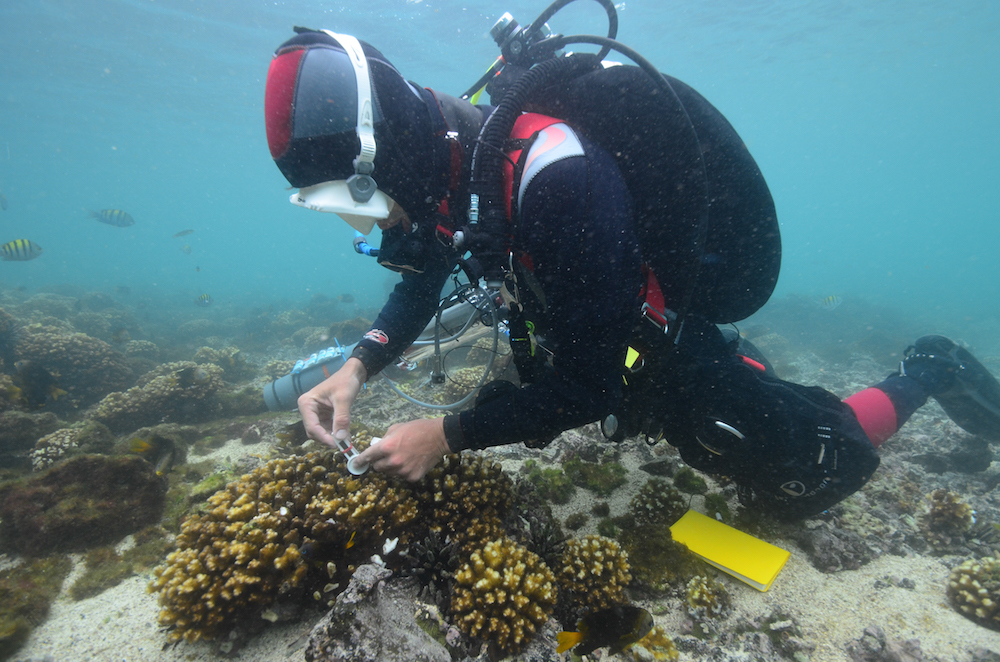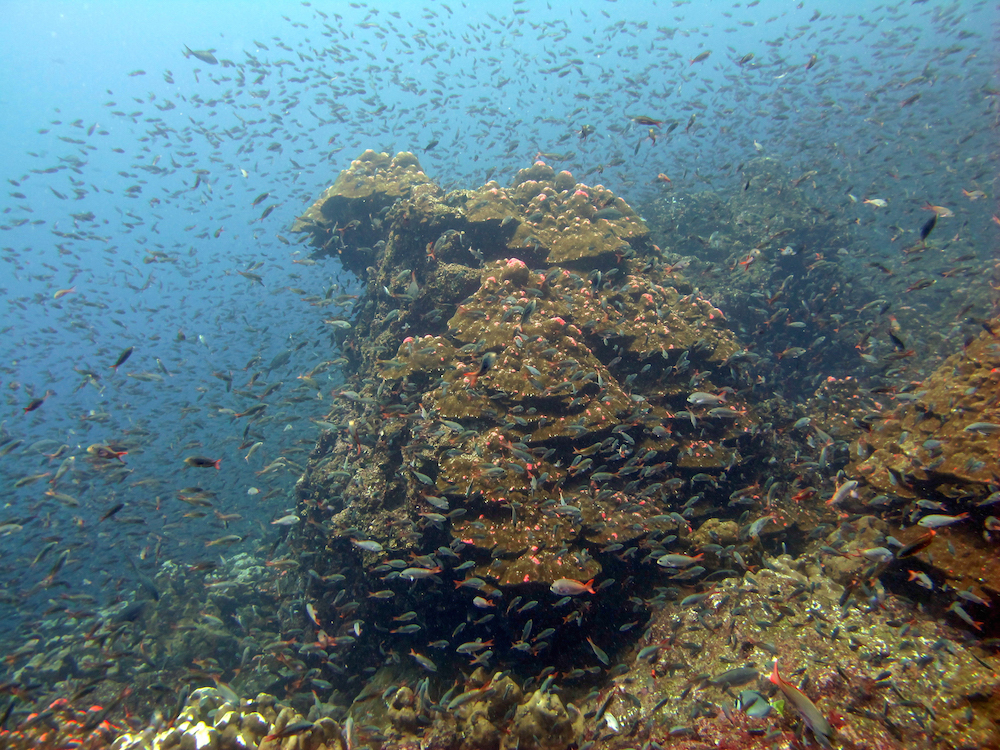Mysteries of the Galapagos Seafloor Revealed
January 30, 2015
Ever wonder what the seafloor of the Galápagos looks like? What goes on below the surface around the magnificent cluster of islands that Darwin’s finches and those wonderful giant tortoises call home? Our partners at the Khaled Bin Sultan Living Oceans Foundation went to find out, and the results have captured our imagination.
Using an innovative high-resolution seafloor habitat mapping technique, researchers from the Living Oceans Foundation (KSLOF) and the National Coral Reef Institute at Nova Southeastern University collected hundreds of underwater videos and over one million depth readings around Baltra, Darwin, Floreana, Isabela, Marchena, Urvina, and Wolf Islands in June 2012 as part of the six-year KSLOF Global Reef Expedition.

Using a method of collecting shallow water surveys called “groundtruthing,” the team covered over 750 square kilometers of seafloor around the Galápagos. Researchers then used these data to categorize corresponding satellite images based on properties of reflected light, creating a habitat map with astounding clarity and geographic scale.
The Galápagos data were folded into the KSLOF’s overall World Reef Map – a continually growing web map interface that was recognized with a first place award at the 2014 Esri Ocean Forum in Redlands, CA last November.[i] The map includes more than just detailed images; it includes water depth information for each location and even a geo-referenced video layer with footage of the seafloor recorded by scientists.

The world didn’t even know the Galápagos had reef-building corals until the 1970’s. This new map provides an invaluable resource for researchers to measure and monitor coral cover over the coming decades as global warming causes unprecedented changes around the globe. Corals and many other benthic organisms are particularly sensitive to shifts in sea temperature and acidity, and the early effects of climate change are already damaging them.

The density and diversity of sea life in the Galápagos is incredible, with 20% of its marine species found nowhere else on earth.[ii] Shoals of fish are so dense in many places that scientists on this expedition often found it difficult to photograph the corals below. Although the relatively cold water and high nutrient levels in this dynamic ecosystem limit coral proliferation, corals play an important part. In their efforts to better understand this role, KSLOF researchers published a scientific paper about the densest known aggregation of one genus of coral, Pocillopora, and how it reproduces asexually.[iii]
To protect the ocean, we must first understand it. Mapping remote areas like the Galápagos can enable conservation efforts by allowing us to discover new ecosystems and species relationships, and can lead to better tools for future ocean exploration. As part of the Eastern Pacific Seascape Hope Spot, the Galápagos is a key area on which to focus conservation efforts – before it’s too late.
Explore the Living Ocean Foundation’s maps and download data for all areas of the Global Reef Expedition HERE.
Watch this video about the Living Ocean Foundation’s visit to the Galápagos leading up to its June 2012 webcast with Dr. Sylvia Earle at the Smithsonian Institution for World Oceans Day:
By Courtney Mattison
Featured image (top): Courtesy KSLOF.
Read more:
- What Does the Seafloor of the Galápagos Look Like? By Gwilym Rowlands, PhD
- More on KSLOF Habitat Mapping







